Aztec Hieroglyphics: Writing with Pictures
Ever heard of the "Aztec alphabet"? Spoiler: there isn't one. The Nahua people (you probably know them as the Aztecs) wrote things down with a system of aztec hieroglyphics that was part art, part code. Let's break it down.
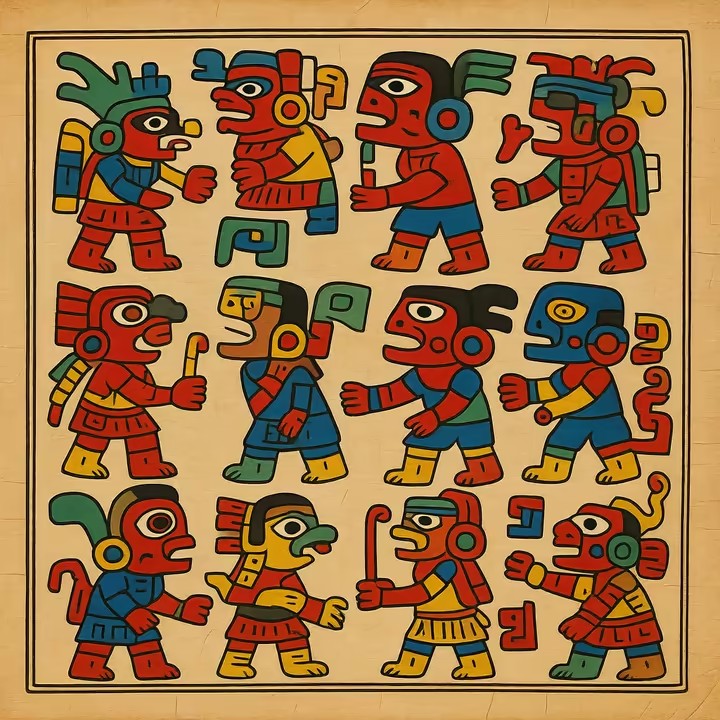
No Alphabet Here
People often look for "Aztec letters," but that's starting on the wrong foot. The Nahua didn't use an alphabet where symbols equal sounds like we do. Instead, they had their own system that mixed art and writing.
Their writing was a clever mix of pictograms (drawings), ideograms (ideas), and phonetic glyphs (sounds). This was a complete system that worked perfectly for running an empire.
Thinking an alphabet is more "evolved" is just our modern bias. For the Nahua, writing and painting were the same sacred craft. To understand their writing, you have to think in pictures, ideas, and sounds.
To really understand how the Aztecs wrote, it helps to know the language behind the symbols. Learn about Nahuatl, the Aztec language , the sounds, words, and poetry that gave these glyphs meaning. For how writing fit alongside speech, messengers, and visual signals across the empire, see How the Aztecs Communicated.
How It Worked
Pictures (Pictograms)
The system started with pictograms, which are just simple pictures of things. A drawing of a shield ( chimalli ) meant "shield," and a drawing of a house ( calli ) meant "house." Simple.
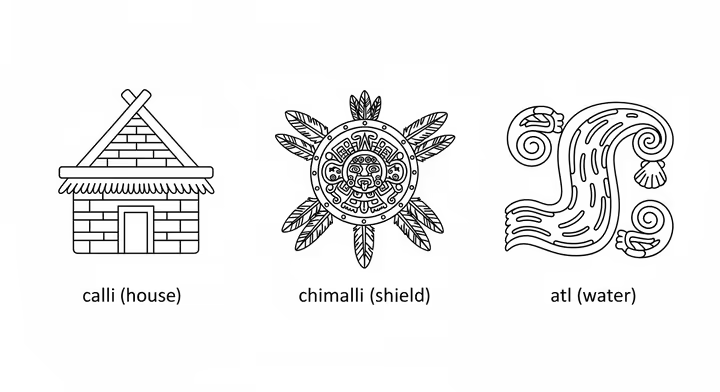
Ideas (Ideograms)
Next came ideograms, where a picture stands for a bigger idea. To show warfare ( yaoyotl ), they'd draw a shield with a club. A wrapped corpse meant death, and footprints meant a journey.
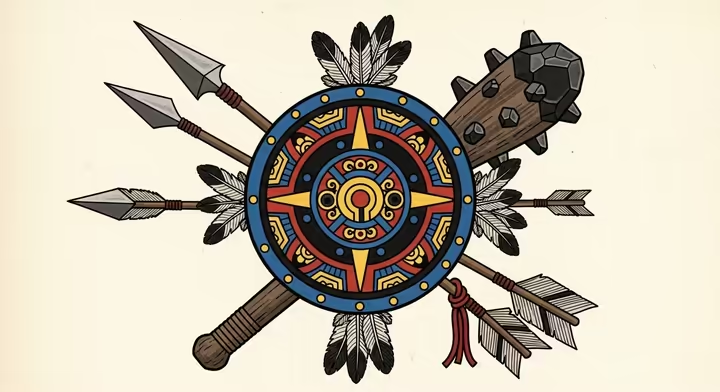
One of the coolest was the speech scroll ( tlahtolli ), a little swirl coming from a person's mouth. It meant speech, a song, or a command. If you saw it next to a ruler, you knew he was the tlatoani , or "he who speaks."
Sounds (Phonetic Glyphs)
The cleverest part used glyphs for their sounds, letting them write words for things you can't easily draw. It worked like a rebus puzzle (think: drawing an eye, a heart, and a ewe to say "I love you").
The glyph for their capital city, Tenochtitlan, is a perfect example. They combined a picture of a stone ( te-tl ) with a prickly pear cactus ( noch-tli ). Say the first syllables out loud, te and noch , and you get the sound of the city's name.
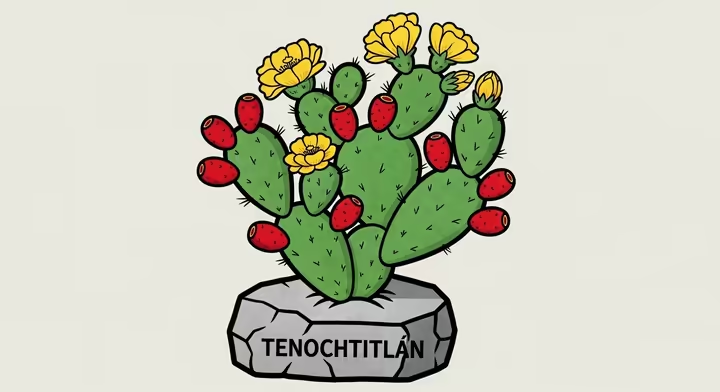
The town Cuauhnahuac ("near the trees") used a tree glyph ( cuauh-itl ) with a speech scroll ( nahua-tl , to speak). The sound for "speak" was a stand-in for the similar sound "near" ( -nahuac ). To write the suffix -tlan ("place of"), scribes drew a set of teeth ( tlan-tli ), using the sound for teeth to mean the place.
This mix of pictures, ideas, and sounds created a flexible writing system.
What They Wrote On
Aztec glyphs weren't just for books. They were on public buildings, pottery, and clothes. What they wrote on depended on who needed to read it and for how long.
Codices: Accordion Books
The most famous were the codices ( amoxtli ). These weren't like our books, but were long strips of paper or deerskin folded like an accordion. They were made from either amatl (fig tree bark paper) or treated deerskin.
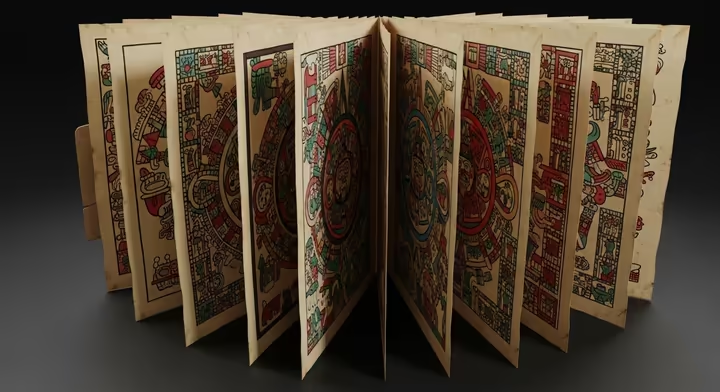
Both materials were coated with a white gesso plaster to create a smooth, bright surface for paint. These books held important knowledge about tribute, calendars, and family histories for priests and nobles.
Stone Carvings and More
Aztec writing also appeared on huge stone monuments for everyone to see. The Aztec Sun Stone (often called the Calendar Stone) is a famous example. Its glyphs tell the Aztec creation story, placing their empire at the center of time.
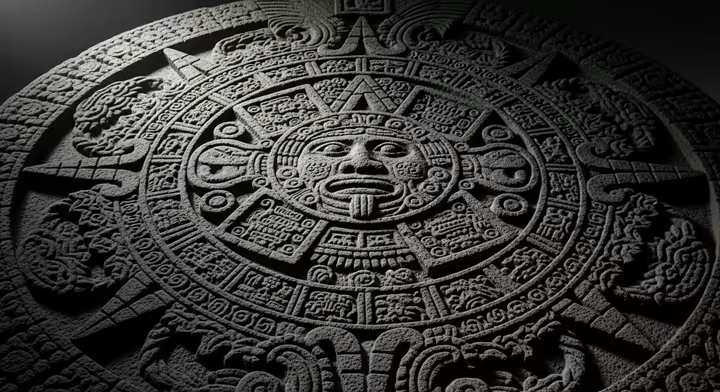
Another is the Stone of Tizoc, a giant circular altar. Its carvings show the ruler Tizoc capturing warriors from fifteen different cities, each identified by its own place-glyph. It was basically state propaganda in stone.
Glyphs showed up everywhere else, too. They were painted on ceramic pots and worked into jewelry. The writing system was a key part of the visual and spiritual world of the Aztecs.
Why They Wrote It: Running an Empire
This was paperwork. Writing was a tool for running an empire, collecting taxes, recording history, and organizing society.
Tribute and Taxes
One of the most important jobs for writing was managing tribute. The Codex Mendoza has detailed lists of what conquered provinces owed. A tribute page clearly shows town glyphs next to pictures of the goods they had to pay: warrior costumes, shields, feathers, and cacao beans.
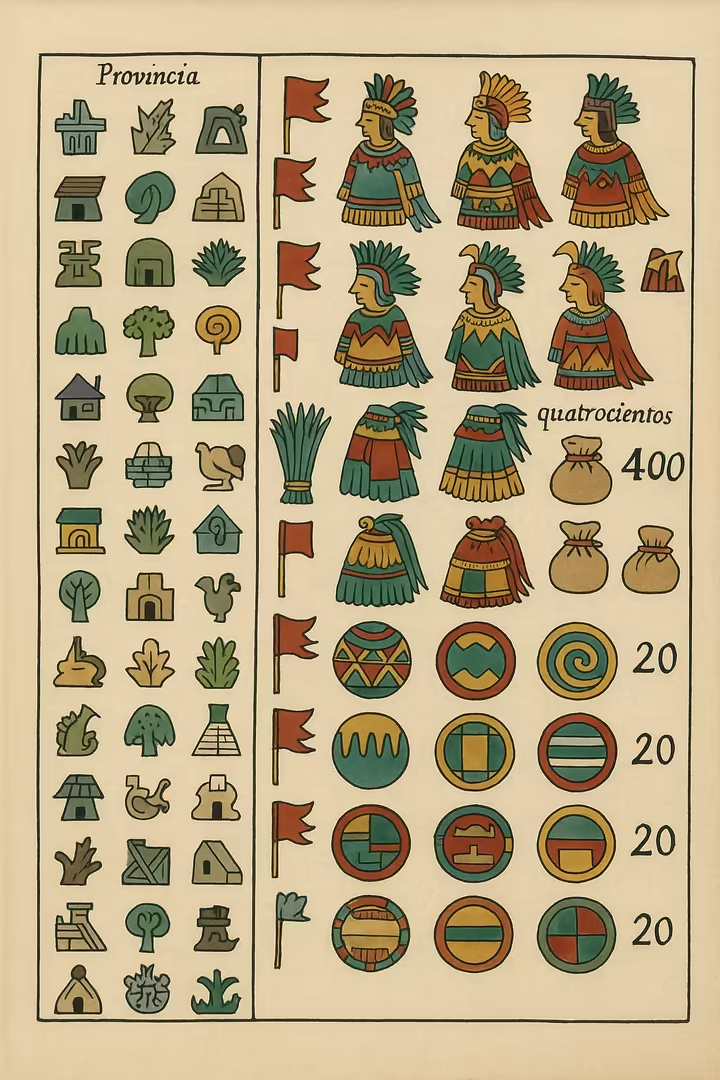
They recorded quantities with a base-20 number system. A dot was 1, a flag was 20, a feather was 400 (20x20), and an incense bag was 8,000 (20x400). This let them track huge amounts of goods flowing into the capital.
History and Genealogy
The codices also recorded history and family trees, which proved the ruling class had the right to be in charge. Some books told the story of the Mexica people's migration from their mythical homeland of Aztlán. Others recorded the conquests of each ruler and traced the lineages of noble families.
Religion and Timekeeping
Glyphs were tied to religion and time. The Aztecs used two calendars at once. The first was a 365-day solar calendar ( xiuhpohualli ) for farming and festivals.
The second, more sacred calendar was the 260-day tonalpohualli , used for divination. It combined numbers from 1 to 13 with 20 day signs, like Crocodile, Wind, House, and Lizard. Priests used books called tonalamatl ("books of days") to predict fates and pick good days for important events.
Maps and Land Deeds
Finally, the writing system was used to map and manage land. Maps showed migration routes and city boundaries. Amazingly detailed documents like the Codex Vergara contained drawings of individual farm plots, useful for land registration and taxes.
The Scribes (Tlacuiloque)
The people who made these glyphs were the tlacuiloque (singular: tlacuilo ). In Nahuatl, the verb tlacuiloa means both "to paint" and "to write." To the Aztecs, they were the same thing.
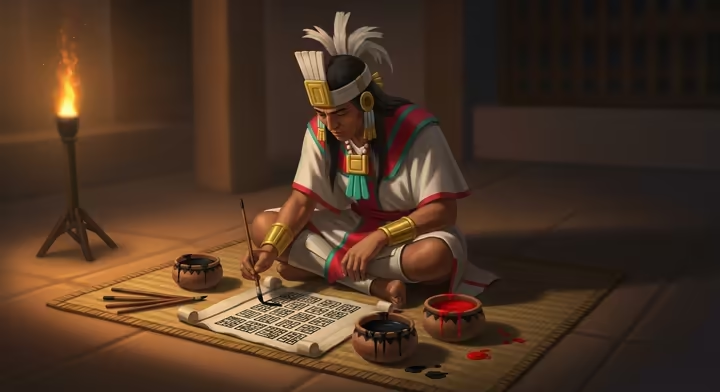
The tlacuiloque were respected artists and scholars who held a high place in society. They could be men or women, and their work was a sacred duty. Young nobles with talent were trained in elite schools called the calmecac to master the craft.
The Nahuatl phrase in tlilli in tlapalli , which means "the black ink, the red paint," was a metaphor for writing, knowledge, and wisdom itself. To have "the black and the red" meant you were a keeper of sacred knowledge. The art was the writing.
The best scribes were even called toltecatl , an honor linking them to the master artisans of the legendary Toltec civilization. People said they had "god in their heart," because writing was seen as a divine act.
Conquest and a Weird Twist
Then the Spanish arrived, and this tradition was almost completely wiped out. Spanish priests thought the codices were works of the devil and burned almost all of them in huge bonfires. It was a massive cultural tragedy, and only a handful of pre-Hispanic books survived.
But here's a weird twist. The same colonial system that destroyed this knowledge also helped preserve some of it. To rule and convert the Nahua people, Spanish officials needed to understand their culture, so they ordered the surviving tlacuiloque to create new codices.
The Codex Mendoza, made around 1541, is one of the most important. Aztec scribes painted their histories and tribute lists, and a Spanish commentator added notes explaining the glyphs. Another is the Florentine Codex, a 12-volume encyclopedia of Nahua life with parallel columns of Nahuatl and Spanish text.
Because of this, our understanding of the writing is filtered through colonial history. The books that survived were made for Spanish purposes. We're always looking at the Aztec system through a post-conquest filter.
Aztec Glyphs Today
Even after the destruction, the Aztec visual language didn't disappear. Its symbols have survived as powerful icons of cultural identity and national pride. Using these glyphs today is a way of reclaiming an indigenous identity.
The best example is right in the middle of the Mexican flag. The eagle sitting on a cactus eating a snake comes directly from the founding myth of Tenochtitlan. The god Huitzilopochtli told the Mexica people to build their capital where they saw that sign.
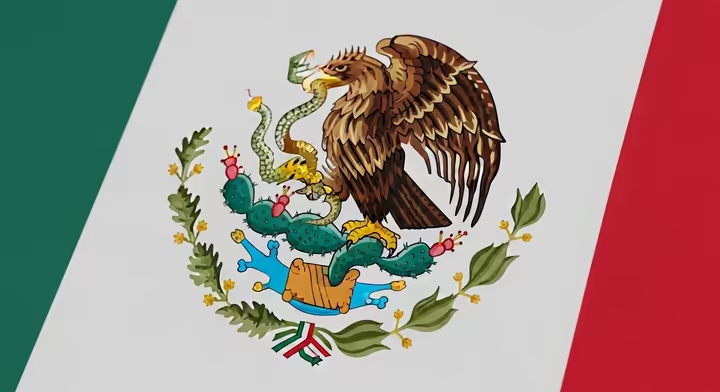
In the 20th century, artists like Diego Rivera filled their murals with Aztec themes. Later, the Chicano art movement in the U.S. used Aztec glyphs and gods as symbols of cultural pride and resistance.
Today, Aztec writing symbols are everywhere, from graphic design and fashion to tattoos and jewelry. These ancient shapes are a living part of modern identity. The legacy of in tlilli in tlapalli , the black ink and the red paint, was never truly erased.